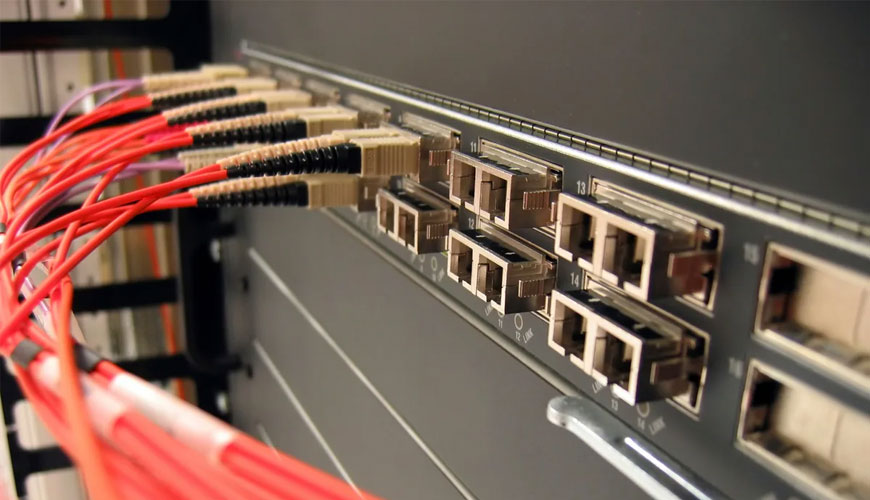

EUROLAB laboratory provides testing and compliance service within the scope of IEC 61300-3-6 standard. This part of the IEC 61300 standard provides procedures for measuring the return loss (RL) of a fiber optic device under test (DUT). As used in this standard, RL is the ratio of the power (Pi) to or from the DUT to the total power (Pr) reflected by the DUT, expressed in decibels.

Four methods for measuring optical return loss will be presented:
IEC 61300-3-6 Method 1
This technique is closest to the theoretical definition of return loss given by equation (1). It measures direct incoming power and reflected power. It is unaffected by instrumental data processing and gives absolute measurement values that are not relative to a reference reflection (technique A). This method has some limiting factors: it cannot spatially resolve two different reflections on the line, and its dynamic range is limited by the properties of the branching device and its ability to suppress reflections beyond that from the DUT.
IEC 61300-3-6 Method 2
This method allows measurement of RL from reflection points on an optical line using an OTDR device, with a spatial resolution in the meter range and a dynamic range of more than 75 dB (depending on the pulse width).
IEC 61300-3-6 Method 3
The purpose of this method is to measure the reflection profiles of single-mode optical devices with micrometer spatial resolution and high dynamic range (> 90 dB) using optical low coherence interference.
The reflection profile is defined as the distribution of reflections at individual end surfaces and/or junction points in single-mode optical devices. When the reflection at a given point is −R (dB), the return loss at that point is given by R (dB). This method measures the reflection at a point by detecting the strength of a beat signal produced by optical interference between the reflected light and the reference light. When analyzing a component with diffuse reflections, each reflection can be identified and located, provided their separation is greater than the spatial resolution of the measurement system.
IEC 61300-3-6 Method 4
The purpose of this procedure is to measure the return loss of single-mode optical devices with spatial resolution in the centimeter range and high dynamic range (> 70 dB) using optical frequency domain reflectometry.
One of the key benefits of this technique is the ability to spatially resolve the desired reflection without any dead zone from unwanted reflections such as all connectors or unterminated ports on the DUT. Also, the OFDR method is highly reliable and the apparatus can be compact.
The measurement in the frequency domain is based on the ability to transform information in the time domain via an inverse Fourier transform. In this way, with a source modulated from some kHz to 1 GHz, it is possible to resolve two reflective points separated by a few centimeters on an optical line.
Where the DUT is the connector mounted at one end of a component, the reference mating plug should be considered half of the DUT connection on the temporary connection (TJ) side and have the same end surface coverage and minimum performance as the connectors.
Where the DUT is an entire assembly of components terminated by braids with or without connectors, braided reference plugs and reference adapters as needed should be added to these connector-terminated ports to create braided full connector assemblies. Reference mating plugs will then be considered half of the TJ and will have the same end surface coverage and minimal performance as the connectors to be measured.
EUROLAB, with its more than 25 years of experience, state-of-the-art accredited laboratories and expert team, helps you get precise and fast results. Do not hesitate to contact our laboratory for your testing and certification requests.
To get an appointment, to get more detailed information or to request an evaluation, you can ask us to fill in our form and reach you.